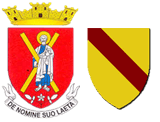The Llosers
Industrial Heritage/ Intangible heritage
The Llosers (slate quarries)
Slate could be a big source of income for the region. All that is missing is a road that would allow trucks to pick it up right where it is produced.
Slate production is very old in Evol. Pierre Favre and his sons from Evol obtained the right to extract slate from the quarries at Celrà and Guixà in June, 1223.
In 1540 Louis Oliba « loserius loci de Evol” [slatemaker from Evol] sold slate on the site at 5 sols per cana. We sold it in 1738: 13 sols and 4 deniers the equivalent to 2 francs of our money today”
(Olette-Evol , the Garrotxes, Abbé LLOPET, 1961)
La llose from Evol
At the end of the nineteenth and the beginning of the twentieth century, the farmers from Evol used to supplement their income by extracting slate. There were small quarries with superficial veins which could be exploited by them in their free time during the winter and spring.
On the eve of the First World war, ten to twelve llosers were exploited, particularly in the Garriga del Castell and towards the Roc dels Moros. The lloses used for construction in the Upper Conflent came for the most part from the quarries of Evol.
« Under the best conditions, a team of two men could make about one cana of slate per day: it was extracted using wedges and sledgehammers, then cut up and shaped using special hammers. The cana is a square measuring two metres by two metres, with the slates being placed edge to edge.” J.Bècat, La vallée d’Evol, revue Conflent n°67, 1974.
The exploitation of the slate quarries declined sharply after the two World Wars. A crafsman slatemaker reopened one of the quarries in 2009.
The Roc dels Moros
On the other side of the river, the Roc dels Moros is curiously surroundes bymany tiny dry stone walls. According to popular tradition, the « Moors” had built a castle there, although there are no traces of any fortifications.
« It seems that the Muslim presence in the northern Pyrenees in the eighth century and the numerous bloody raids perpetrated later by the Arab invaders have left an indelible mark in the collective memory. The hated Moor, the sworn enemy, has ended up being converted into a popular image as a fearful force, with herculean strength , a giant capable of great feats of strength and an extraordinary builder.” Histoires de pierres, légends d’ici, Agence méditerranéenne de l’environnement, Association de développement économique du canton d’Olette, 1998.
